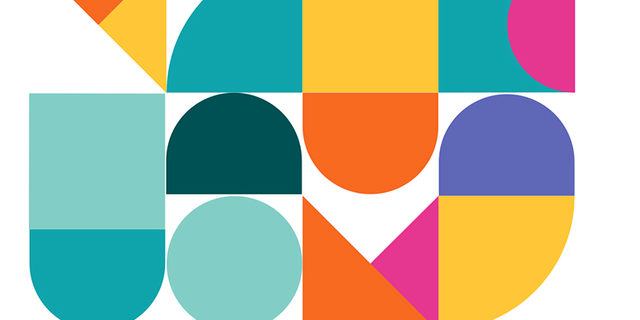You're riding home on your bike on a sunny day with a bag full of groceries in the rear basket. At the intersection, the crosswalk sign lights up. You pedal your bike down the sidewalk ramp, across the street, and back up the ramp to the other side. After parking the bike, you begin reading a text message with one hand and grab the groceries with the other.
You head up the stairs to your apartment and ask the automated assistant to unlock the door. Your baby has just fallen asleep, and your phone dims to adjust to the light in the apartment. Once the groceries are away, you and your significant other sit down and watch a recommended movie at low volume with subtitles.
Does any of that sound familiar? If so, you've experienced inclusive design.
- The sidewalk ramp was a curb cut, created for people who are legally blind or have low vision.
- Texting in direct sunlight is possible due to improved application contrast – an accessibility rule to help people with low vision understand application UI.
- While being able to use an application’s UI with a single hand is not a current standard, it is necessary for people with motor issues or missing limbs.
- Automated Voice Assistants stem from text-to-type apps developed for people who were unable to type.
- Phone dimming not only reduces eyestrain, but also conserves energy – this helps the environment.
- The recommended movie understood you and your viewing preferences and offered an excellent choice.
- Subtitles were first used in silent movies. They are now used primarily for people who are hard of hearing or deaf and for language translations in media.
Good design with a capital "G"
Inclusive design isn't just about accessibility. It's also about internationalization, localization, readability, interaction, bias, and environmental impact.
Inclusive design addresses the unique needs, abilities, and drivers of people. It understands that challenges may be permanent, temporary, or situational. It works with – not for – a range of perspectives and groups to deliver the best experience possible. Inclusive design moves beyond business and government compliance and includes diversity as an integral part of the process.
Five types of questions that will help you build inclusive design into your applications
As part of our travel toward a more inclusive Pega, we’ve discovered that Good design depends on great questions. Here's what we’re asking.
- Identify your audience: Who is my audience really? What has observation shown me about them? How does my audience want to be addressed? What do they want to accomplish?
- Usage: How does my audience use the design in ways I wouldn’t expect? Which standards, like WCAG 2.1 or mobile-friendly layouts, should be benchmarks for successful and legal design?
- Exclusion: What are the technical or design constraints? What are potential or explicit points? Who should I ask to help identify this? How can we prevent our audience from fostering exclusion? How can I start designing alongside people with diverse needs instead of for them?
- Adoption: How can I make this design more consistent, clear, and easier to adopt? How can I give more control over polarizing preferences such as animations, security, sound effects, scrolling, and timeouts?
- Impact: How will this measurably improve the experience for people, the planet, and the company?
Inclusive design at Pega
We've already made great strides along our journey towards an inclusive Pega and will continue to do so. These are some of the steps we've taken so far:
- We train our team members on managing bias throughout the interview process.
- Our websites and the latest design system for Pega Constellation, target WCAG 2.1 AA, the international standard for accessibility requirements globally.
- Our new UI uses flexible type and CSS's logical properties to better meet language and user preferences.
- Automated and manual accessibility testing are part of our dev standards.
- Design sprints better help our team identify and empathize with our audience.
- Our Platform offers AI-driven bias-reduction tools, including our Ethical Bias Check feature, which proactively detects bias.
This is just the beginning of the exciting and rapid changes happening inside Pega.
Inclusive design is empathy for our clients, partners, developers, and end users
It's Good design. And it's the right thing to do.
Learn more:
- Learn how Pega's Constellation design system helps you build, work, and engage more effectively.
- Get more tips and insights from our dev team experts.
- Watch a replay of a from our event and see how the Pega Cosmos Design System streamlines app dev.
- Try the Pega Platform for free and see how easy it is to build apps with our low-code UI.

